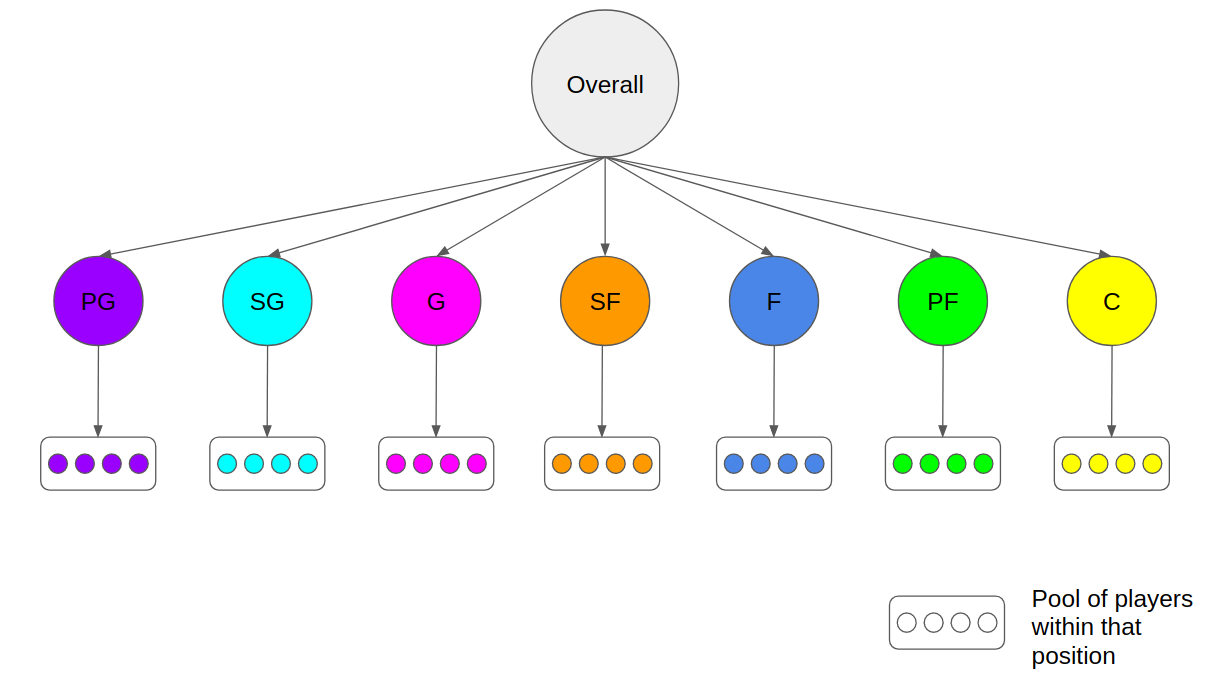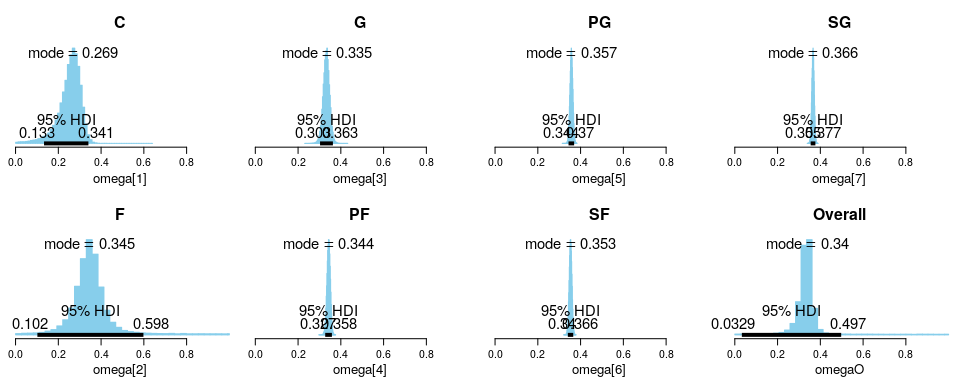Analysis of 3 Point Shooting Skills of Big Men Positions Across a Decade
If you have been following the NBA 2019/20 season, you may have heard about Andre Drummond’s recent trade and the lack of interest in him by other teams during the phase of trade rumours. A center like Andre Drummond has strong post-up offensive skills and rebounding capabilities but it may not fit the modern NBA game that has a demand on 3 point shooting and floor spacing. A motivation for this analysis topic is to verify how the big men positions have evolved to fit the current systems with respect to their 3 point shooting abilities.
With the previous article analysing the 3 point shooting skills for different players and positions in the 2018-2019 regular season using Bayesian Hierarchical (BH) modelling, let us take another look at how the 3 point shooting skills for big men positions (Center and PF positions) have evolved across the years.
Methodology Summary
For the regular seasons starting from 2009/10 to 2018/19, Markov Chain Monte Carlo (MCMC) simulations were generated based on the BH modelling of the posterior for different players. For those who are not familiar to it, we incorporate player positions information in a hierarchical structure that provides a good basis for generating individual players’ skills. This is based on the generally sound assumption that players within different positions have more homogenous skills. And this hierarchy is anchored by an overall population distribution that represents the overall NBA league wide shooting capability for that particular season.

Instead of focusing on individual players abilities, we will take a look at the positional level omegas (which represents the mode of the assumed beta distribution) for each regular season, specifically for the Center and Power Forward distributions. As an example, below is the depiction of all positional omegas (including the overall omega considering all positions) for the regular season in 2018/19 which was generated in the previous article.

Analysis of Position: Center
Based on the simulations, we can observe that there is an evolution across the years within the decade.

From 2009 to 2014, the 3 point shooting percentages for centers were typically bimodal. We can postulate that within center positions, there might have been 2 types of players: those with exceptional 3 point shooting averages of around 35%, and those with much poorer shooting averages under 10%. Across each year, we see the “ebb and flow” of the 3 point shooting skills:
- In 2009/10, we see a relatively equal spread mix of players skills between the abovementioned 2 types of player skills.
- In 2010/11, there was a receding trend of center players with good 3 point shooting skills, as shown by the heavy density mass occupying the low shooting average range.
- In 2011/12, the trend was reversed; it seems like centers with good 3 point shooting were in demand again.
- In 2012/13, centers were attributed with low 3 point shooting averages again.
- From 2012/13 to 2014/15, we see the gradually increasing focus on centers with good 3 point shooting averages.
- From 2014/15 onwards, it seems like NBA center players finally had a convergence of player 3 point shooting skills, as shown by the unimodal distribution. There was no reversal in this trend ever since, and Centers are generally now equipped with better 3 point shooting skills.
Here is another perspective of the Center density plots for all years, as segmented by seasons before 2015/16 and seasons (inclusive of and) after 2015/16.

It does seem like there is some deterioration in the 3 point shooting skills from 2017/18 to 2018/19 regular season.
For an extra visualisation perspective, we can take a look at the density ridgeline plots for all years in the past decade.

Something worth noting is that for seasons before 2015/16, there were actually centers with superior 3 point shooting abilities even compared to the seasons including and after 2015/16. This can be seen by the non negligible density mass occupying between 37.5% to 42%.
There also seems to be some form of deterioration of 3 point shooting skills for Centers in 2018/19 compared to the 2017/18 seasons. Not only did the mode reduce drastically from 32.5% to 27.2%, we also observe a substantial shift in the density mass with an expansion of the high density interval (HDI) range of 95% credibility.
Analysis of Position: Power Forwards
The 3 point shooting development within Power Forwards are not as exciting, but there are certain highlights worth noting.

Throughout the decade, there is an increasing improvement in 3 point shooting skills amongst PFs. - This is observed by the gradual shift of probability mass towards the higher shooting average range. - Accompanying that is the general increasing trend in modes which has improved from between 31.8% average in the first 3 years to 34.4% average in the last 3 years - The HDI ranges of 95% credibility across the years been becoming “sharper” and narrower. The last few years have HDI ranges of 3% shooting, which is incredible to me.
Similar to what we did for Centers, here is another perspective of the PF density plots for all years, as segmented by seasons before 2015/16 and seasons (inclusive of and) after 2015/16.

It does seem that the the regular season of 2015/16 seems to represent a peak transition period for 3 point shooting for PFs in tandem with centers (as previously observed). For seasons including and after 2015/16, we can see a higher density mass around the peak of the mode, which also corresponds to the narrowing of the 95% HDI range that was mentioned.

The density ridgeline plots of PF 3 point shooting shows an interesting development. In regular seasons 2013/14 and 2014/15, we can observe that there is a non-negligible proportion of exceptional 3 point shooting skills compared to 2015/16 and 2016/17 season as shown by the density mass occupying the regions beyond 35%.
Similar to what we observe in the Centers, the 2018/19 regular season marks a downturn in terms of 3 point shooting skills in PFs compared to the previous seasons. Perhaps there is a systematic change that had a causal impact on both positions in terms of 3 point shooting.
Limitations of Analysis
The center positions in the past demonstrated bimodal distributions, which thus implies that the BH model used may not be as appropriate (given that it was under the assumption that players within a specific position possess a relatively homogenous set of skills).
Even though it may not be as appropriate, it was a pretty interesting experience to actually discover the bimodal distributions for Center 3 point shooting averages in the early part of the decade.
Summary
In this analysis, I generated the MCMC results of a Bayesian Hierarchical model of NBA 3 point shooting skills for Centers and Power Forwards across the decade from 2009/10 to 2018/19. With that, we took a look at how the modern NBA game has caused the big men position to evolve their 3 point shooting skills.
We discovered that for Centers, there used to be bimodal distributions indicating heterogenity among player skillsets in that position. However, as the game developed, the skillset slowly converged towards a Center profile with decent 3 point shooting average.
For PFs, we observed that there is a big focus on 3 point shooting skill development, and this skillset evolved to be relatively homogenous among players in that position as shown by the narrowing of the HDI ranges.
A large part of this analysis was based on the book Doing Bayesian Data Analysis by John Kruschke.
The scripts for data scraping and analysis can be found in this Github repo.
